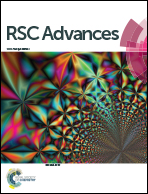Dispersion of multiwalled carbon nanotubes in Acacia extract and it's utility as an antimicrobial agent
Abstract
This work deals with the preparation of a multiwalled carbon nanotubes (MWCNTs) dispersion in Acacia extract (AE) and checks its antimicrobial activity. UV-vis analysis, Fourier transform infra-red spectroscopy (FT-IR) and scanning electron microscopy (SEM) were used to confirm the surface adsorption of extract components on MWCNT. The dynamic light scattering (DLS) determined the zeta potential and the particle size distribution (PSD) of MWCNTs in the AE dispersion medium. To observe the MWCNT stability and dispersion in AE, Turbiscan and transmission electron microscopy (TEM) were used respectively. The MWCNTs were found dispersed till the end of day 30, which suggests that AE is a good dispersing medium due to its surfactant properties. Finally, the dispersion was tested for its applicability as an antimicrobial agent using E. coli as a model microorganism. Colony forming units (CFUs) and dehydrogenase activity were assessed to check the inhibitory effect of dispersion. To test cell damage, fluorescent-based assay was conducted. The reduction in the viable bacterial count in the test sample proved the ability of dispersion as an antimicrobial agent. We are the first to report that AE may provide an alternative to the chemical surfactant for MWCNTs dispersion, and the AE–MWCNTs dispersion can be utilized as an antimicrobial agent.


 Please wait while we load your content...
Please wait while we load your content...